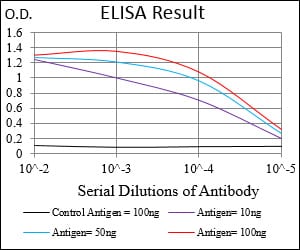
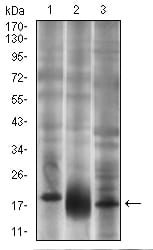

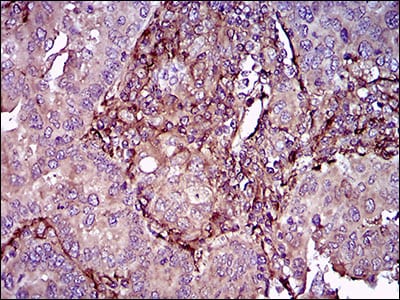
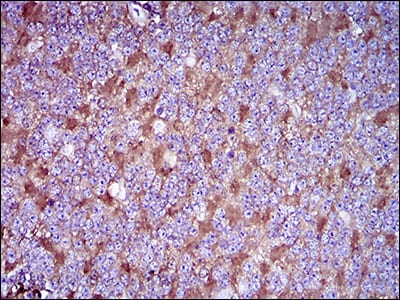
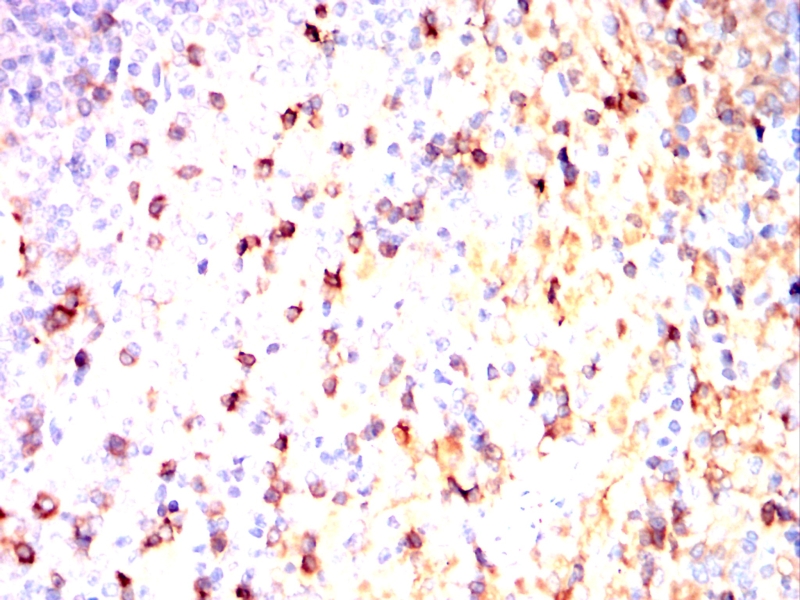
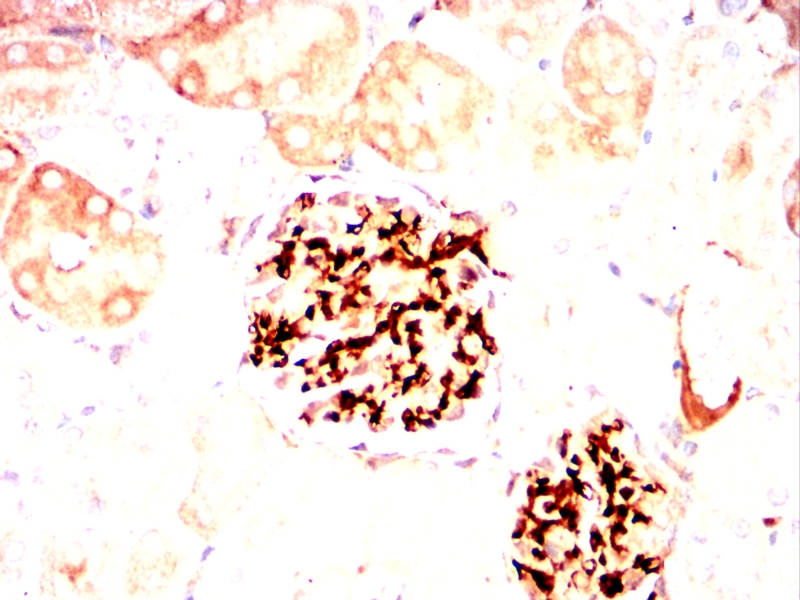
| WB | 1/500 - 1/2000 | Human,Mouse,Rat |
| IF | 咨询技术 | Human,Mouse,Rat |
| IHC | 1/200 - 1/1000 | Human,Mouse,Rat |
| ICC | 1/200 - 1/1000 | Human,Mouse,Rat |
| FCM | 咨询技术 | Human,Mouse,Rat |
| Elisa | 1/10000 | Human,Mouse,Rat |
| Aliases | CD90 |
| Entrez GeneID | 7070 |
| clone | 7E1B11 |
| WB Predicted band size | 18kDa |
| Host/Isotype | Mouse IgG1 |
| Antibody Type | Primary antibody |
| Storage | Store at 4°C short term. Aliquot and store at -20°C long term. Avoid freeze/thaw cycles. |
| Species Reactivity | Human,Rat |
| Immunogen | Purified recombinant fragment of human THY1 (AA: 17-132) expressed in E. Coli. |
| Formulation | Purified antibody in PBS with 0.05% sodium azide |
+ +
以下是关于THY1抗体的3篇参考文献及其摘要概括:
---
1. **文献名称**:*"Thy-1 as a regulator of cell-cell and cell-matrix interactions in pulmonary fibrosis"*
**作者**:Hagood, J.S. et al.
**摘要**:该研究探讨了抗THY1抗体在肺纤维化模型中的作用,发现通过抗体诱导THY1交联可激活成纤维细胞,导致细胞外基质沉积增加,揭示了THY1在调控纤维化信号通路中的关键作用。
2. **文献名称**:*"Thy-1 (CD90) is a novel marker of cancer stem cells in malignant melanoma"*
**作者**:Rege, T.A. & Hagood, J.S.
**摘要**:研究利用抗THY1抗体鉴定黑色素瘤中的癌症干细胞,发现THY1高表达与肿瘤侵袭性和耐药性相关,阻断THY1信号可抑制肿瘤生长,提示其作为治疗靶点的潜力。
3. **文献名称**:*"Thy-1 (CD90) regulates the interaction between melanoma cells and vascular endothelium"*
**作者**:Saalbach, A. et al.
**摘要**:该文献通过抗THY1抗体阻断实验,发现THY1介导黑色素瘤细胞与血管内皮细胞的粘附,影响肿瘤转移过程,揭示了THY1在肿瘤微环境中的调控机制。
---
以上研究分别从纤维化、癌症干细胞及肿瘤转移的角度,阐明了THY1抗体的实验应用及其功能机制。
THY1 antibody targets the THY1 glycoprotein, also known as CD90. a glycosylphosphatidylinositol (GPI)-anchored cell surface protein belonging to the immunoglobulin superfamily. First identified in murine thymocytes in the 1970s, THY1 is evolutionarily conserved and expressed in various cell types, including neurons, fibroblasts, certain stem cells, and activated endothelial cells. Its expression varies across species and tissues; for example, it is abundant in rodent neurons but predominantly found in human fibroblasts. THY1 is implicated in cell adhesion, migration, signaling, and interactions with extracellular matrix components, though its precise biological roles remain under investigation.
In research, THY1 antibodies are widely used as markers to identify and isolate specific cell populations. In neuroscience, they help map neuronal circuits by labeling surface proteins. In immunology and stem cell studies, they assist in characterizing T-cell subsets or mesenchymal stem cells. Function-blocking THY1 antibodies are employed to study its role in processes like fibrosis, cancer metastasis, and immune regulation. Dysregulated THY1 expression has been linked to diseases such as pulmonary fibrosis, glioblastoma, and chronic inflammation, making it a potential therapeutic target. However, species- and tissue-specific expression patterns necessitate careful antibody selection for experimental accuracy.
×